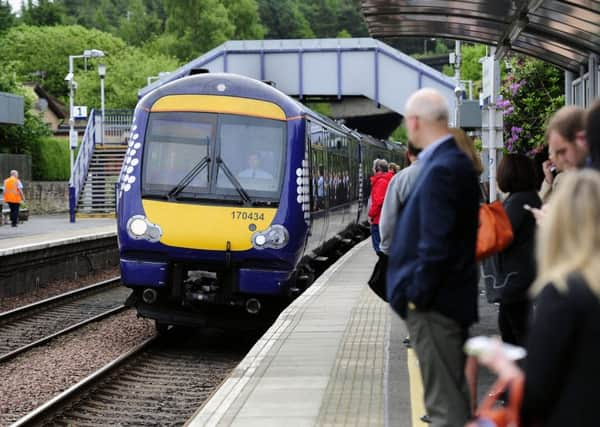Platform: Success of a railway service is about more than numbers says Robert Samson


If a railway is judged by how many passengers it attracts, then by that standard ScotRail is not only a success but a continuing success story.
But this story has many chapters, with passenger growth just one of them. The chapter on train performance has seen deteriorating punctuality and as a consequence ScotRail hitting the headlines for the wrong reason.
Advertisement
Hide AdAdvertisement
Hide AdNow a passenger making a journey will determine if a train is on time or not by what the timetable states. Really quite simple to work out - but not the way the rail industry determines if a train is on time or not.
Punctuality and reliability is ‘officially’ measured as the percentage of trains that have arrived at their final destination within five minutes of the advertised time. This is called the Public Performance Measure (PPM).
In order to allow Transport Scotland and passengers to get a sense of how ScotRail is performing on an annual basis, ScotRail produces a rolling annual average figure called the Moving Annual Average (MAA). This is an average of PPM results for the past 13 railway periods (railway period is 4 weeks). It is this MAA that ScotRail is required to report to Transport Scotland and the Scottish Government.
The MAA shows how ScotRail is doing against the annual target written into its franchise agreement. It is the dip in the MAA from 90.3 per cent to 89.6 per cent that has prompted Transport Scotland to ask ScotRail to produce a Performance Improvement Plan (PIP).
Passengers with long memories may recall that in 2006, PPM fell to 86 per cent and a PIP was implemented that saw punctuality return to over 90 per cent. But by the very nature of the railway performance system, these plans take months to achieve their aim and cannot be judged on a short-term daily or weekly basis.
Another chapter in the railway story is what type of railway do passengers want? What are their priorities?
Transport Focus as the independent transport user watchdog, with a strong emphasis on evidence-based campaigning and research, asked passengers what type of railway they wanted and for their priorities. Those are: value for money (an affordable and easy to understand fares system), getting a seat on the train, punctuality (as measured by passengers), improved frequency of train services, and better information during disruption.
The ScotRail franchise renewal process, which saw Abellio awarded the franchise, addresses those priorities in many ways.
Advertisement
Hide AdAdvertisement
Hide AdThe franchise agreement provides for the introduction of smart ticketing which will offer savings to passengers. It will also deliver 200 more train services, providing an additional 20 per cent in seating capacity.
If punctuality fails to meet agreed targets, as we currently see, a PIP will be put in place. Targets based on Transport Focus’s National Rail Passenger Survey are included in the franchise to measure standards of information during disruption.
All of the above have been previously announced by both Transport Scotland and ScotRail but the building of new trains and developing a robust smart ticketing programme which passengers can trust takes time and cannot be delivered on day one of the new franchise.
This creates an expectation gap between announcement and delivery which leads to frustration from passengers. They welcome the announcements – but are still travelling on the same trains, with the same seating capacity, as when the franchise started 18 months ago.
The chapter on the future for ScotRail is constantly being discussed. It appears to be centred on who drives Scotland’s trains. Is it Driver Abellio, Driver Public Sector Body or Driver Nationalisation?
Before that question is answered, perhaps a more fundamental one for passengers should be answered first. What future system will provide the best long-term investment in our railway, address passenger priorities on a consistent and long-term basis and cope with continued passenger growth?
Robert Samson is passenger manager of Transport Focus